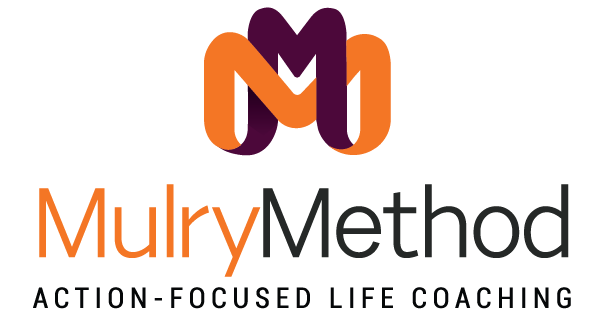You can have complete confidence in Relaxation Therapy
What is Relaxation Therapy, or RT?
Relaxation Therapy consists of a precise relaxation induction and training procedure, first published as 4 audiocassettes in 1976. Relaxation Therapy was preceded by Progressive Relaxation, a term coined by American physician Dr. Edmund Jacobson in 1938. Also preceding RT in 1975, is Dr. Herbert Benson’s book, The Relaxation Response, in which he describes his research into the effects of meditation.
What differentiates the Relaxation Therapy of the Mulry Method is its emphasis on rhythmic flow throughout the relaxation induction procedure, which lasts about 15 minutes, followed by various sounds of nature providing natural rhythms of their own.
What is Relaxation?
Dr. Mulry defines relaxation as a parasympathetic nervous system adaptation to the external rhythm provided; an active process of “letting go” into the flowing rhythm.
Dr. Mulry was a modern jazz percussionist prior to creating Relaxation Therapy and this played an important role in his conception of active rhythmic flow as an important element of his relaxation induction process. The prevailing objective of Relaxation Therapy is for the learning participant, through repetitive RT experiences, to develop relaxation skills. Relaxation skills are an essential element of Dr. Mulry’s emphasis of the importance of self-management of physical tension.
I first published and copyrighted RT in 1976 and it was included in my self-published book and audiocassette program “Tension Management & Relaxation Therapy: An Approach To A Balanced Way of living.
CV Mosby / Times Mirror, a leading medical publisher world-wide bought the rights to RT in 1980 when we again published the same audiocassette program, and included RT in our forthcoming Mosby Publications, The Back School and The Portable Back School.
I coined the term Relaxation Therapy and it is the original RT, and there are now hundreds of RT versions out there, but mine was the first and has been an enduring product since 1976.
People asked me why I called it Relaxation “therapy” and responded, “Because it is the therapy of the future” which it has since proven to be true.
The Mulry Method Relaxation Therapy is a precise process, similar to hypnosis induction. We build upon a rhythmic structure, even to the point where the “Sounds of the Sea” are harmonized with the preceding Relaxation Therapy induction.
I traveled thousands of miles and spent hundreds of hours finding the right sounds of the sea and I have never told anyone where the recording took place, primarily because I want the sea to be your sea, in your special fantasy/memory environment.
Listen to these as often as you like, and they will center you, give you deep focus, and get you In The Zone.
—Dr. Mulry

How to practice Relaxation Therapy
Relaxation Therapy consists of three stages:
A simple Rhythmic Breathing exercise, simple Muscle Relaxation exercises,
and a simple Meditation exercise.

Healthy Pain Relief: How to Stop Prescription Drug Abuse & Addiction
Prescription drug abuse is fastest growing drug problem in the United States. Mulry Method Relaxation Therapy (RT) offers a natural alternative to pain relief.

Natural Sleep and Relaxation Therapy (RT)
The drug- and alcohol-free alternative to a better night’s rest People suffereing from insomnia often use hypnotic drugs to induce

Take a Power Nap for easy, quick, surprisingly powerful natural cognitive brain benefits
Scientists have found a “power nap” during the day may not only counteract fatigue from inadequate sleep at night, but also deliver brain benefits

Your Vagus Nerve: How to increase Security & Calm using Polyvagal Theory
Evidence suggests the ventral Vagus Nerve physically manifests human emotional evolution from “fight or flight” to more conscious responses and loving behavior.

Relaxation Therapy – An innovative approach to Tension Management
An article about Reaume C. Mulry, Ph.D. and his creation of Relaxation Therapy. From Los Angeles Magazine, December 1977. Written
The History of Relaxation Therapy
Relaxation Therapy (RT) was introduced in the 1970s by Clinical Psychologist Reaume Carroll Mulry, Ph.D. after one year of pre-production work. The completed work was then copyrighted as a published sound recording on June 24, 1976, registration number 34521.
On December 18, 1980, Dr. Mulry assigned and transferred the same copyright to The C.V. Mosby Company of the City of St. Louis, State of Missouri (medical publishing company now Elsevier) to be included in Dr. Mulry’s forthcoming publications with C.V. Mosby known as Tension Management & Relaxation: An Approach To A Balanced Way of Living and The Back School: A Team Approach To A Balanced Way of Living.
At this time, Dr. Mulry was in private practice as a Clinical Psychologist and was a member of the Associated Medical Staff of the Eisenhower Medical Center in Rancho Mirage, California. Relaxation Therapy was first publicly recognized by the magazine, ‘Los Angeles’. Relaxation Therapy, Dr. Mulry’s relaxation tapes, were privately acknowledged in a letter of appreciation by George H.W. Bush, 41st President of the United States of America.
Relaxation Therapy in Print and Audio Publications
Dr. Mulry embedded Relaxation Therapy as a fundamental component of all of his later works, which include books and human development programs. Among these are,
Tension Management & Relaxation: An Approach to a Balanced Way of Living, published by C.V. Mosby-Times Mirror (1981).
The Back School: A Team Approach to Low Back Pain published by C.V. Mosby-Times Mirror (1981). Co-authored by White, A., Mulry, R.C., Mattmiller, W., & White, L..
The Portable Back School: Home-study Approach to Proper Back Care authored by Mulry, R.C. and White, A. (1981).
Freedom From Back Pain (1984) authored by Mulry, R.C., published by Nightingale-Conant Corporation.
Relaxation Therapy provided the foundation for the audio CD Trust Your Swing: The Power of the Pendulum and Rhythmic Flow (2004) authored by Mulry, R.C. & Mohr, K., published by American Network Services, Inc.(A Nevada Corporation).
First Aid for Back Pain (2009) authored by Mulry, R.C., published by PureSafety (Occupational Health and Safety Training Organization), as an online training program.
Later in Dr. Mulry’s career, Relaxation Therapy became a fundamental component of his In The Zone multi-media, Sport Psychology, training program, which identified 4-Core Competencies of Winning Athletes (i.e. relaxation, balance, flexibility and focus). The Arizona Daily Sun article, “Finding ‘the Zone’” reported that being at the top of your game and In The Zone is built on these four key concepts. Dr. Mulry’s emphasis on the importance of relaxation training is key to preventing injuries and stress management.

